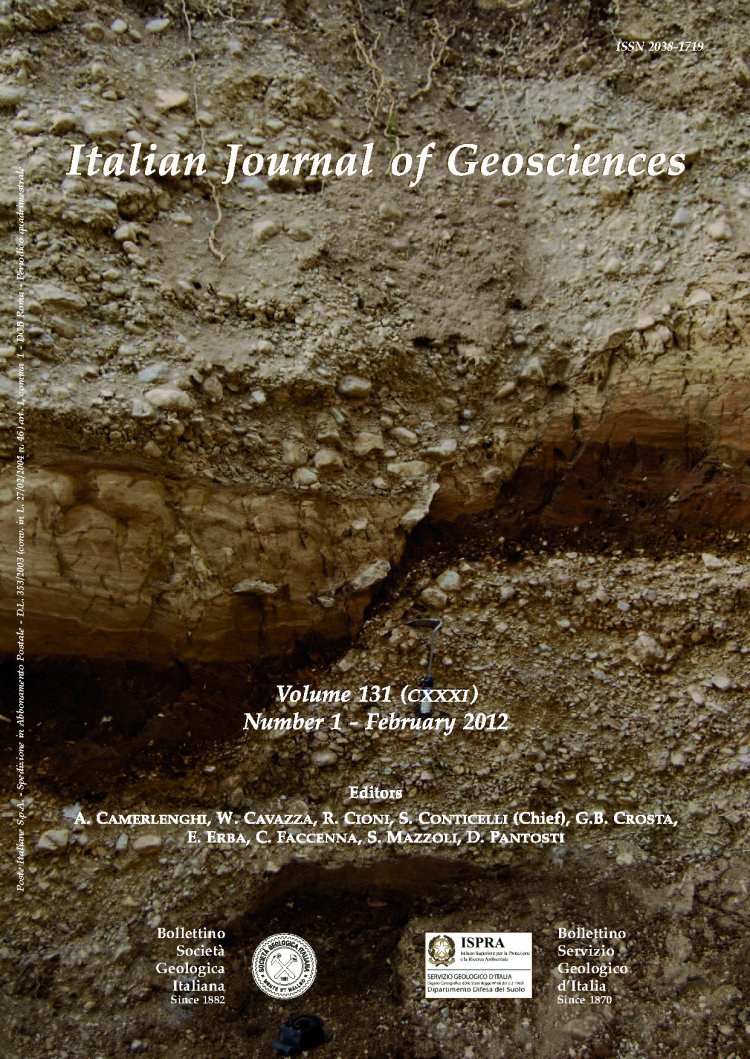
Jurassic carbonate depositional systems of the Mt. Catria-Mt. Acuto area (Umbria-Marche Apennines, Italy)
Ugo Donatelli(*) & Mario Tramontana(*)
(*) Università degli Studi di Urbino "Carlo Bo", Dipartimento di Scienze della Terra, della Vita e dell'Ambiente (DiSTeVA). Campus scientifico Enrico Mattei, Loc. Crocicchia, 61029 Urbino, Italy.
DOI: https://doi.org/10.3301/IJG.2011.19
Volume: 131 (2012) f.1
Pages: 3-18
Abstract
A geologic survey, integrated with sedimentalogic observations and macrofacies analysis, has been carried out for the Jurassic deposits outcropping in the Mt. Catria-Mt. Acuto area.
The study area is located within the northern Umbria-Marche Apennines and is characterized by the presence of Jurassic different type successions that reflect depositional environment variability.
The aim of this paper is to reconstruct the Jurassic paleographic structural setting and the paleotectonic evolution of the area. Particular attention was given to the characterization of the relationships between deposits formed during and after the drowning of the Calcare Massiccio peritidal carbonate platform. In addition, the depositional trend of this carbonate platform was determined by the characterization of tidal environment sedimentary structures and facies associations.
The data obtained allowed for the identification of two isolated, uplifted blocks of the carbonate platform (Corno di Catria and Mt. Acuto), reduced in size, bounded by escarpments of tectonic origin and separated by a narrow Jurassic basinal area (Mt. Catria). Along paleoslopes of structural highs, drowning Calcare Massiccio "B"-type deposits have been identified that differ from Calcare Massiccio "B" deposited on the tops of paleohighs in their mainly lithoclastic facies. The drowning phase, at the tops as well as along the flanks of the blocks, is also marked by unconformity surfaces (drowning unconformities).
The different paleostructural sectors have been differentiated during the Lias by a phase of strong extensional tectonics that was responsible for the formation of the tectonic escarpments, subsequently affected by submarine erosion.
In the early stages of the Middle Jurassic, tectonic reactivation resulted in formation of some marginal, down-dropped portions of the structural highs, which were subsequently filled by the same cherty sediments that deposited in the Mt. Catria basinal area.
In the study area, the depositional environment has remained differentiated throughout the Jurassic as evidenced by the presence of conformable and unconformable boundaries between the Tithonian calpionellid pelagites of the Maiolica Formation and underlying deposits.
Keywords
Get Full Text